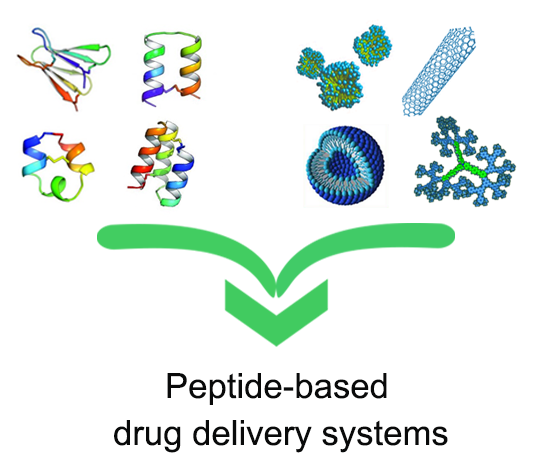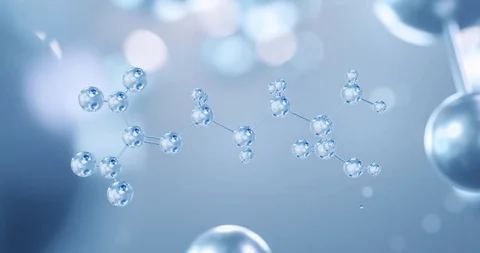Peptides vs. Protein: What's the Difference?
In the world of nutrition, bodybuilding, and health supplements, the terms "peptides" and "proteins" are frequently used. Though they are often discussed together, they are fundamentally different in structure and function. Understanding the distinctions between peptides and proteins is crucial for optimizing your health and performance goals. In this comprehensive guide, we'll explore the differences between peptides and proteins, their roles in the body, and how each can benefit you.
Understanding Proteins
1. What Are Proteins?
Proteins are large, complex molecules made up of long chains of amino acids. They are essential for numerous bodily functions, including the building and repair of tissues, production of enzymes and hormones, and support of immune function. Proteins are composed of 20 different amino acids, which are the building blocks of these molecules.
2. Protein Structure
Proteins have a unique structure consisting of four levels:
- Primary Structure: This is the sequence of amino acids in a polypeptide chain.
- Secondary Structure: This includes the alpha-helix and beta-sheet formations that arise from hydrogen bonding.
- Tertiary Structure: This is the overall 3D shape of a single polypeptide chain.
- Quaternary Structure: This involves the assembly of multiple polypeptide chains into a functional protein complex.
3. Functions of Proteins
Proteins play a myriad of roles in the body:
- Structural Support: Collagen and keratin are structural proteins that provide support to tissues and organs.
- Enzymatic Activity: Enzymes are proteins that catalyze biochemical reactions.
- Transport: Hemoglobin and other transport proteins move molecules throughout the body.
- Regulation: Hormones like insulin are proteins that regulate various physiological processes.
- Immune Defense: Antibodies are proteins that help fight infections.
4. Sources of Protein
Dietary sources of protein include:
- Animal-Based: Meat, poultry, fish, eggs, and dairy products.
- Plant-Based: Beans, lentils, nuts, seeds, and soy products.
5. Protein Supplements
Protein supplements, such as whey, casein, and plant-based protein powders, are popular among athletes and fitness enthusiasts to meet their protein needs and support muscle growth.
Understanding Peptides
1. What Are Peptides?
Peptides are short chains of amino acids linked by peptide bonds. Unlike proteins, which are long chains of amino acids, peptides typically consist of fewer than 50 amino acids. They can be derived from proteins or synthesized independently.
2. Peptide Structure
Peptides are characterized by their shorter chain length compared to proteins. Their structure can be classified based on the number of amino acids:
- Dipeptides: Composed of two amino acids.
- Tripeptides: Composed of three amino acids.
- Oligopeptides: Composed of 4 to 10 amino acids.
- Polypeptides: Composed of more than 10 amino acids but fewer than 50.
3. Functions of Peptides
Peptides have a variety of functions, including:
- Hormonal Regulation: Many hormones, such as insulin and glucagon, are peptides that regulate blood sugar levels.
- Neurotransmission: Some peptides function as neurotransmitters or neuromodulators in the nervous system.
- Immune Response: Peptides like thymosins play a role in immune system development and function.
- Cell Signaling: Peptides are involved in cell signaling processes that affect cell growth and repair.
4. Sources of Peptides
Peptides like GHK-Cu and BPC-157 can be obtained from dietary protein sources as they are broken down during digestion. Additionally, synthetic peptides are available in supplements for various health and performance benefits.
5. Peptide Supplements
Peptide supplements are often used for:
- Muscle Growth: Certain peptides, like growth hormone-releasing peptides like DSIP and MT-ll, are believed to stimulate growth hormone release and aid in muscle development.
- Skin Health: Peptides such as collagen peptides are used in skincare products for their potential to improve skin elasticity and reduce wrinkles.
- Recovery and Repair: Peptides like TB-500 and PT-141(Bremelanotide) can support recovery from exercise and injury by promoting tissue repair and reducing inflammation.
Comparing Peptides and Proteins
1. Composition
- Proteins: Long chains of amino acids with complex structures.
- Peptides: Short chains of amino acids with simpler structures.
2. Function
- Proteins: Broad range of functions including structural, enzymatic, transport, regulatory, and immune roles.
- Peptides: Frag (176-191) Specific roles including hormonal regulation, neurotransmission, immune response, and cell signaling.
3. Absorption and Utilization
- Proteins: Digested into amino acids and absorbed in the intestines, then reassembled into new proteins as needed.
- Peptides: Can be absorbed directly through the intestines and have specific physiological effects due to their smaller size.
4. Benefits
- Proteins: Essential for overall health, muscle growth, and repair. High-quality proteins provide all essential amino acids.
- Peptides: Targeted benefits such as enhanced muscle growth, improved skin health, and faster recovery.
5. Supplementation
- Proteins: Commonly used in the form of protein powders and bars to meet daily protein needs.
- Peptides: Used for specific purposes such as muscle-building, skin health, and recovery, often in more specialized forms like peptide powders or creams.
Choosing Between Peptides and Proteins
1. Your Goals
- Muscle Building: Protein supplements provide the necessary amino acids for muscle growth, while peptides like cJc-1295(without DAC) and Tirzepatide may enhance this effect by stimulating growth hormone release.
- Skin Health: Collagen peptides are effective for improving skin elasticity and reducing signs of aging.
- Recovery: Both proteins and peptides can aid in recovery, but peptides might offer faster results due to their direct physiological effects.
2. Dietary Preferences
- Protein Sources: Choose based on your dietary preferences and needs. Animal-based proteins provide all essential amino acids, while plant-based proteins can be combined to achieve a complete amino acid profile.
- Peptide Supplements: Consider the specific benefits you are looking for, such as muscle growth or skin health, and choose supplements accordingly.
3. Safety and Efficacy
- Proteins: Generally safe when consumed as part of a balanced diet. Overconsumption can lead to digestive issues or strain on the kidneys.
- Peptides: Safety varies depending on the peptide type and usage. Consult with a healthcare professional before starting peptide supplements.
Conclusion
In summary, while both peptides and proteins are crucial for health and performance, they serve different functions and offer distinct benefits. Proteins are fundamental to numerous bodily processes and are essential for overall health. Peptides like Tirzepatide and MOTs- c, with their shorter chain lengths, provide targeted effects and can complement protein intake for specific goals such as muscle growth, skin health, and recovery.




Leave a Reply